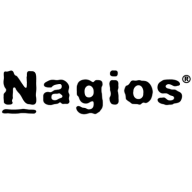

Splunk Observability Cloud and Nagios Fusion compete in monitoring and observability. Splunk appears to have the upper hand in ease of integration and scalability, while Nagios offers extensive capabilities worthwhile for its price.
Features: Splunk Observability Cloud provides real-time data analytics, seamless interaction across environments, robust monitoring, and alerting. Nagios Fusion offers centralized monitoring across networks and systems, versatility, and customization, ideal for complex IT setups.
Ease of Deployment and Customer Service: Splunk Observability Cloud has a straightforward deployment model supported by comprehensive resources, facilitating accessibility for various IT capacities. Nagios Fusion offers powerful deployment options, requires more setup, and benefits from a strong community for troubleshooting and development.
Pricing and ROI: Splunk Observability Cloud involves higher initial costs but yields significant ROI through operational insights and issue resolution. Nagios Fusion is more cost-effective initially, providing solid ROI with low maintenance overhead, suitable for budget-conscious organizations needing scalability.

Nagios Enterprises delivers official products, services, and solutions for and around Nagios – the industry standard in enterprise-grade IT infrastructure monitoring. With millions of users worldwide, Nagios is the undisputed champion in the IT monitoring space. Our team of dedicated professionals works to ensure total customer satisfaction with all the services we provide. Our extensive network of partners helps extend Nagios services and solutions to new organizations and markets worldwide to meet a variety of business needs. Nagios Enterprises was founded in 2007 by Ethan Galstad. Ethan created what would later become known as Nagios in 1999, and currently serves as the President of Nagios Enterprises.
Splunk Observability Cloud combines log search, data integration, and dashboards for seamless monitoring, enhancing infrastructure visibility and security. Its cloud integration and scalability support diverse environments, improving operational efficiency.
Splunk Observability Cloud offers comprehensive monitoring tools with user-friendly interfaces, enabling end-to-end infrastructure visibility. Its real-time alerting and predictive capabilities enhance security monitoring, while centralized dashboards provide cross-platform visibility. Users benefit from fast data integration and extensive insights into application performance. Despite its advantages, improvements could be made in integration with other tools, data reliability, scalability, and cost management. Users face challenges in configuration complexity and require better automation and endpoint protection features. Enhancing AI integration, alerts, and adaptation for high-throughput services could further improve usability.
What are the key features of Splunk Observability Cloud?In industries like finance and healthcare, Splunk Observability Cloud is implemented for application performance monitoring and infrastructure metrics. Its ability to track incidents and analyze machine data benefits network infrastructure, while distributed tracing and log analysis aid in tackling security threats. Organizations often integrate it for compliance and auditing purposes, enhancing visibility into network traffic and optimizing performance.
We monitor all IT Infrastructure Monitoring reviews to prevent fraudulent reviews and keep review quality high. We do not post reviews by company employees or direct competitors. We validate each review for authenticity via cross-reference with LinkedIn, and personal follow-up with the reviewer when necessary.